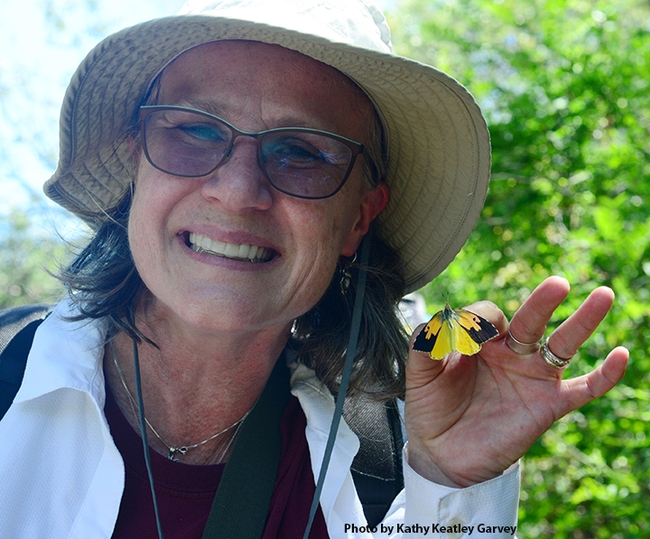
The Land of Z? It's the home or major breeding ground of Zerene eurydice, the California dogface butterfly, the state insect. Where is this major breeding ground: At the 40-acre Shutamul Bear River Preserve, Auburn, maintained by Placer Land Trust (PLT).
The Land of B? That's the Bohart Museum of Entomology at UC Davis, the venue for an open house showcasing the California dogface butterfly. The free and family friendly event will take place July 16 from 1 to 4 p.m. in Room 1124 of the Academic Surge Building, 555 Crocker Lane, UC Davis campus. The crowd will celebrate the 50th anniversary of the year that the California State Legislature designated the dogface butterfly as the state insect.
Officials from both Placer Land Trust and the Bohart Museum will be at the open house to answer questions and provide information about the biology and history of the state insect. There also will be a family arts-and-craft activity.
To prepare for the open house and to gain more scientific knowledge, a Bohart Museum crew toured the "Land of Z" on June 10 (in 100-degree heat) and saw an estimated 75 to 100 dogface butterflies.
"Most people have never seen a single dogface butterfly in the wild, let alone 75 to 100 in one day," said Bohart associate Greg Kareofelas, a Davis-based naturalist who studies the insect and leads volunteer PLT tours. He has reared multiple California dogface butterflies, from egg, to caterpillar to chrysalis to adult, and will show the macro images at the open house.
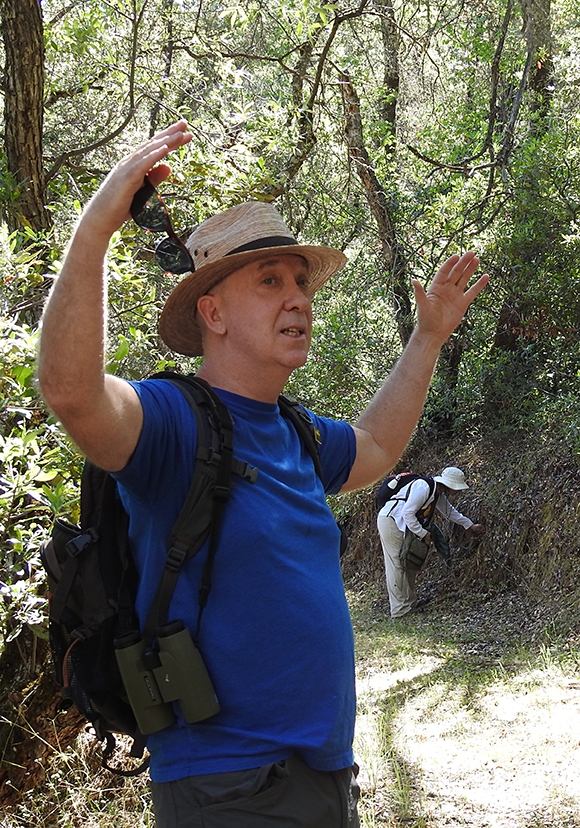
Ross, a self-described naturalist, birdwatcher and "a practicing amateur lepidopterist," learned of the host plant's presence in 2005. If the host plant is there, he figured, the butterfly must be there, too.
Ross visited the site in the fall of 2008 but found only leafless twigs. Further investigation revealed that the "leafless twigs" were, in fact, false indigo, "and it was so abundant on the preserve he was sure the butterfly would be present as well," according to an article on the PLT website. "Ross visited the Shutamul Preserve only once a year for the next two years and during those visits was able to see many dogface butterflies. He later learned from Professor Art Shapiro at UC Davis that the life history of the dogface butterfly was not well understood, especially for the over-wintering adults. Ross saw this as a great opportunity to conduct a scientific study to document the life-cycle of this butterfly."
Found only in California, the rarely seen butterfly is also known as (1) "the flying pansy," referring to the male's spectacular black and yellow coloring, and (2) as a "dog head" butterfly (the markings on the male resemble a silhouette of a dog's head). The female is mostly solid yellow.The dogface butterfly is so named because the wings of the male appear to be a silhouette of a poodle.
Its range spans from San Diego County to Sonoma County, and it is usually found in mountain and foothill locations, according to PLT. UC Davis distinguished professor Art Shapiro of the Department of Evolution and Ecology has recorded multiple sightings of the high-flying butterflies in Gates Canyon in Vacaville in his 50 years of monitoring butterflies in Central California. He has also seen it in his driveway in Davis. But, as Shapiro told us today, "I doubt if I have seen 100 in my entire life." (See his information on Zerene on his research site, Art's Butterfly World.)
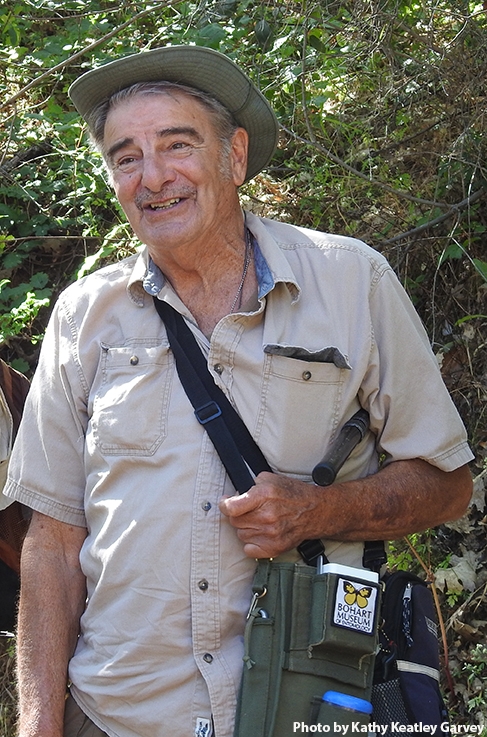
- 2005: The Placer Land Trust acquired the 40-acre property from a willing seller.
- 2005/2006: California Native Plant Society reported false indigo at the Shutamul Bear River Preserve.
- 2007-2008: Deren Ross (accompanied by a PLT crew) discovered the California dogface butterfly there.
- 2011: Butterfly surveys and invitations to folks with an interest in plants and entomology began.
The PLT website reports: "In June 2011, Ross began going out to the Shutamul Preserve weekly to conduct male/female butterfly counts and behavior patterns. It proved to be a very exciting study; eggs were observed being laid on the False Indigo and then caterpillars got busy munching away at the plant. Previous research indicates the butterfly has two broods per year: one brood from April to July (adult life-span 3-4 months) and a second in August to October (adult life-span 6-8 months). The adults from the last brood overwinter in a state of hibernation until emerging again in early spring and mating."
Ross discovered a dogface in "near mint condition" on March 8, 2012. Now he and Kareofelas are investigating whether the dogface overwinters as a chrysalis.
The UC Davis crew on the trip included Tom Zavortink, Bohart research associate and entomologist; Professor Fran Keller of Folsom Lake College, a Bohart scientist; Bohart senior museum scientist Steve Heydon, curator and collections manager; Bohart associate Greg Kareofelas; Bohart lab assistant Brennen Dyer; Tabatha Yang, Bohart education and outreach coordinator; and Kathy Keatley Garvey, communications specialist, Department of Entomology and Nematology. UC Davis distinguished professor Lynn Kimsey, director of the Bohart, which includes a global collection of eight million insect specimens, was unable to attend.

History
California legislators adopted the dogface butterfly as the official state insect on July 28, 1972. But as early as 1929, entomologists had already singled it out as their choice for state insect. Their suggestion appears in the California Blue Book, published by the State Legislature in 1929.(Read more on how the butterfly became the state insect under the Ronald Reagan administration.) In 1972, fourth grade students of Betty Harding and Shirley Klein in the Dailey Elementary School, Fresno, advocated that the butterfly be the state insect. The teachers and students enlisted the help of State Assemblyman Kenneth L. Maddy, who authored AB 1834.
In 2013, Fran Keller, then a doctoral student in entomology at UC Davis, published a 35-page children's book, The Story of the Dogface Butterfly that includes photos by Kareofelas and Keller, and illustrations by then UC Davis student Laine Bauer. The book tells the untold story of the California dogface butterfly, and how the Fresno schoolchildren became involved in convincing the State Legislature to select the butterfly as the state insect. Both the book and a Keller-Kareofelas poster of the male and female butterfly are available for sale in the gift shop at the Bohart Museum.
In 2017 Kareofelas led a tour for the KVIE "Rob on the Road" TV program. It is online at http://vids.kvie.org/video/3002661342/
Although most people have never seen the California dogface butterfly in the wild, they may have noticed a tiny image of the insect on California driver licenses. It also appears on first-class stamps, on the California State Fair monorail, and on a wine label.
Attached Images:
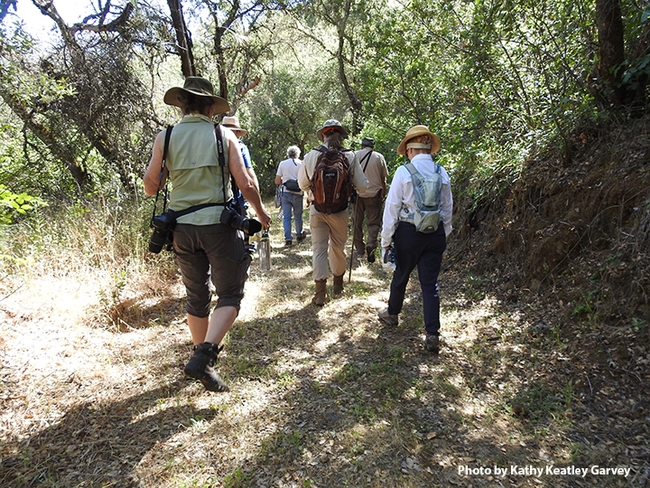
And the tour of the California dogface butterfly habitat begins. (Photo by Kathy Keatley Garvey)
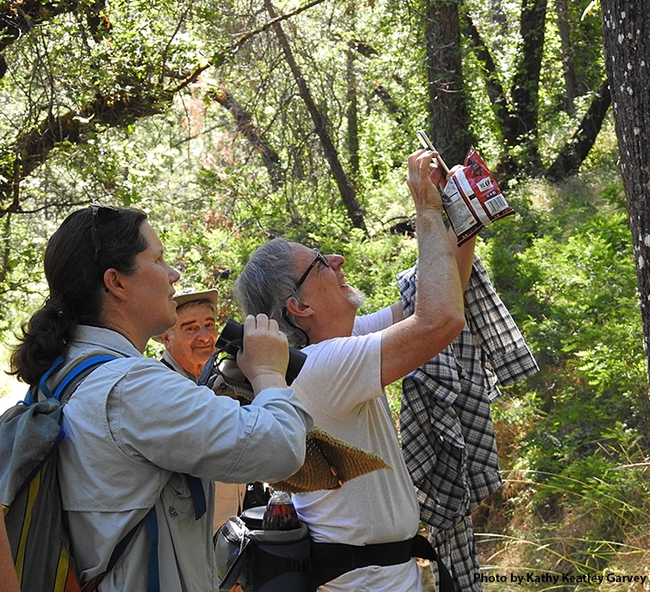
Tabatha Yang and Steve Heydon of the Bohart crew photograph California dogface butterflies. In back is Bohart associate Greg Kareofelas. "Males fly a beat, often coming down a canyon, then turning around and going back up again, and repeating," says UC Davis distinguished professor Art Shapiro. "Both sexes routinely fly 15-20 feet off the ground.(Photo by Kathy Keatley Garvey)
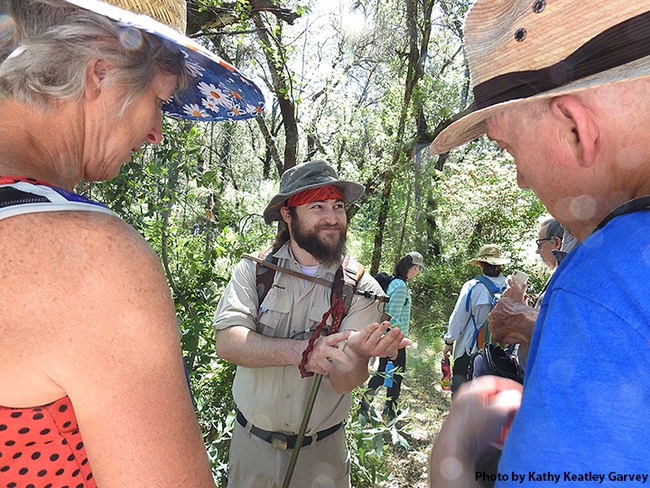
Bohart lab assistant Brennen Dyer with a California dogface butterfly. (Photo by Kathy Keatley Garvey)
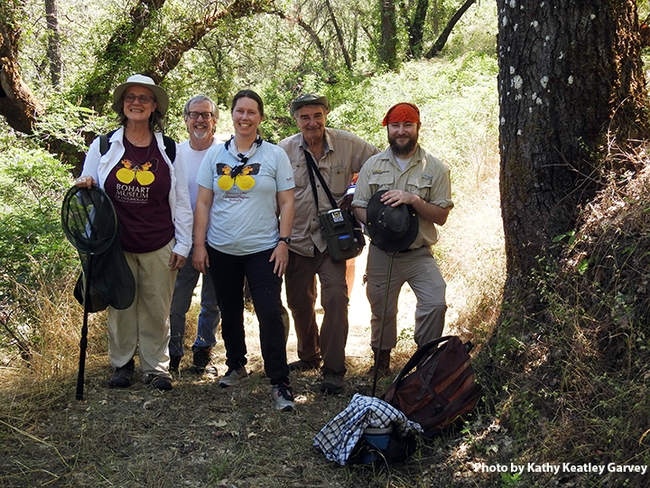
The Bohart crew on the Auburn field trip included (from left) Professor Fran Keller of Folsom Lake College, a Bohart scientist; senior museum scientist Steve Heydon; Tabatha Yang, education and outreach coordinator; Greg Kareofelas, Bohart associate and a PLT volunteer guide; and Bohart lab assistant Brennen Dyer. (Photo by Kathy Keatley Garvey)